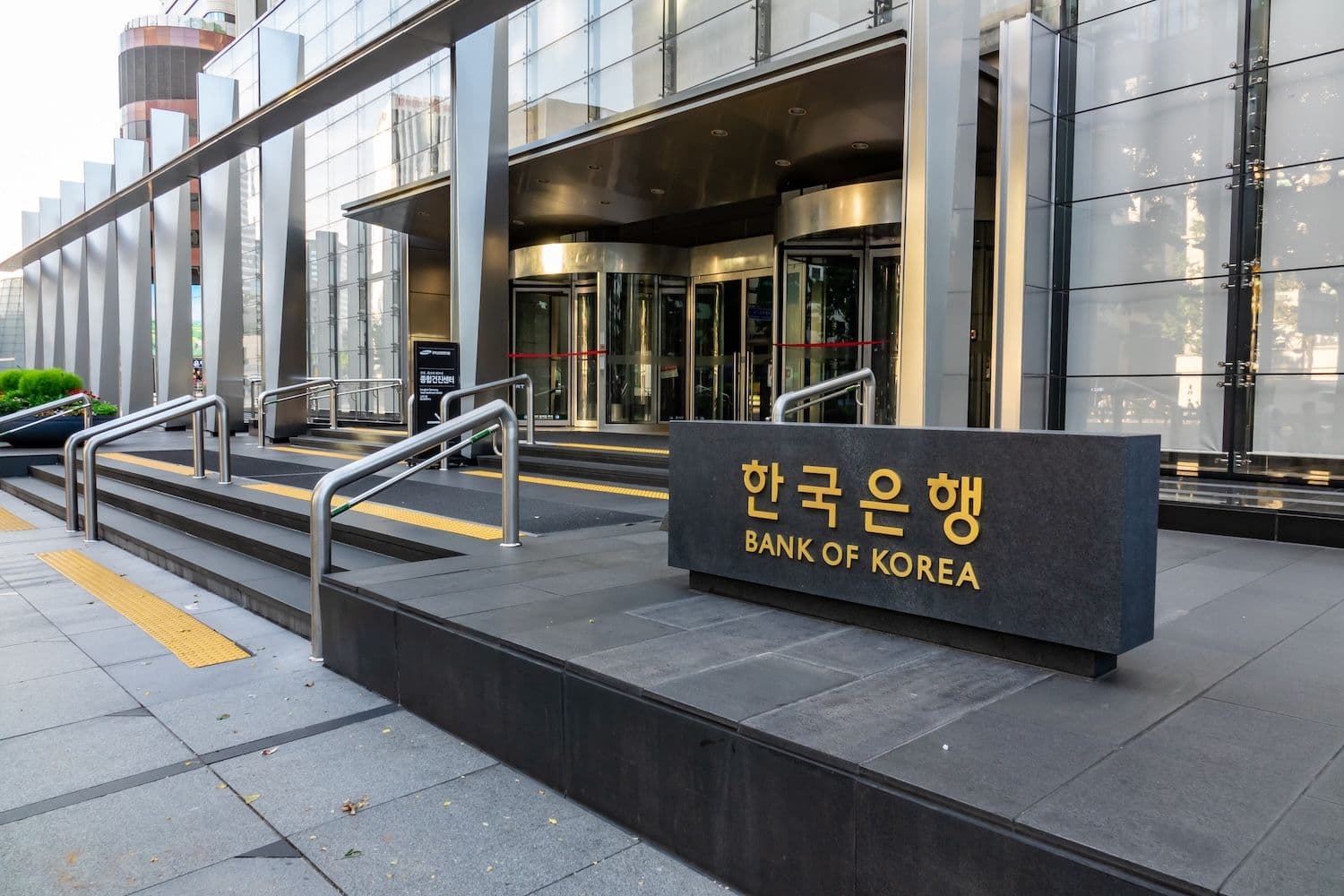South Korea's central bank announced plans to integrate state-backed deposit tokens with public blockchain networks, a move designed to counter the massive outflow of domestic capital to foreign stablecoins that reached 27 trillion won in the first quarter of 2025.
What to Know:
- Bank of Korea plans to link central bank deposit tokens to public blockchain systems like Ethereum by 2026
- Foreign stablecoins accounted for 47% of South Korea's crypto outflows, totaling $19.1 billion in Q1 2025
- The initiative aims to protect monetary sovereignty and reduce reliance on USD-pegged stablecoins
Central Bank Targets Public Blockchain Integration
Deputy Governor Lee Jong-ryeol outlined the bank's strategy during Tuesday's Blockchain Leaders Club event in Seoul. He described the planned tokens as "a type of stablecoin" backed by the central bank's digital currency framework.
The announcement represents a significant shift in South Korea's approach to cryptocurrency regulation. Lee emphasized the bank is "considering a plan to link" deposit tokens with public blockchain systems, potentially allowing banks, businesses and individuals to use state-issued tokens on existing networks.
Current data shows stablecoins dominated South Korea's cryptocurrency outflows in the first quarter. The 27 trillion won figure represents nearly half of all crypto-related capital leaving the country. Most traders in Seoul rely on USDT and USDC for their stability against market volatility.
Monetary Sovereignty Concerns Drive Policy Shift
Lee warned that continued dependence on foreign stablecoins threatens South Korea's monetary sovereignty. He cited risks including financial instability and potential money laundering activities facilitated by overseas-issued tokens.
The global stablecoin market has expanded rapidly, surpassing $230 billion in March 2025. Current market capitalization stands at approximately $247 billion, representing a $3.537 billion increase over the previous week alone.
These figures underscore the urgency behind South Korea's initiative. Lee noted the country must act decisively before foreign coins completely dominate local cryptocurrency trading. The Bank of Korea's deposit token strategy aims to provide a domestically-controlled alternative to USD-pegged stablecoins.
Opposition political leaders have embraced similar proposals. Presidential candidate Lee Jae-myung promised to implement a won-backed stablecoin if elected, arguing it could reduce the 56.8 trillion won ($40.8 billion) cryptocurrency outflow while simplifying domestic trading.
Industry Support And Implementation Timeline
Major cryptocurrency exchanges attended Tuesday's announcement, including representatives from Bithumb, Coinone and Korbit. Their presence highlighted the crypto industry's desire to influence regulatory development. Regulators also participated in discussions about implementation challenges and compliance requirements.
Democratic Party lawmaker Min Byoung-dug emphasized South Korea's need to "take the lead in institutionalizing stablecoins" before US-pegged tokens establish permanent market dominance. Political momentum appears to be building behind the central bank's initiative.
The Bank of Korea plans additional testing phases throughout 2025. These pilots will focus on security protocols, user privacy protection and anti-money laundering compliance. Technical challenges include ensuring seamless integration with existing blockchain infrastructure while maintaining regulatory oversight. If testing proves successful, a business pilot program could launch by 2026. This timeline would position South Korea among the first major economies to implement a central bank digital currency on public blockchain networks.
Closing Thoughts
The Bank of Korea's announcement signals a fundamental shift in how South Korea approaches cryptocurrency regulation and monetary policy. Success could influence other central banks considering similar blockchain integration strategies, potentially reshaping the global stablecoin landscape.

